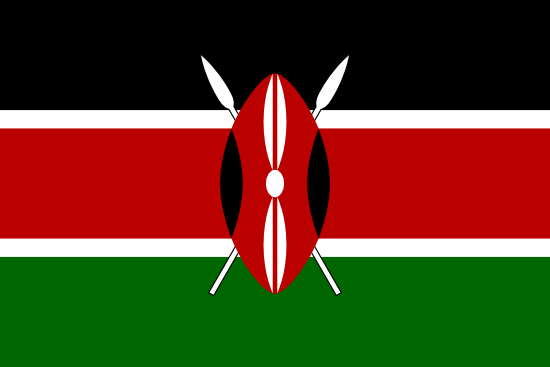Primary technology
Services offered
Secondary users
Extension-agents, Financial-institutions, Government-ministries, Researchers, Seed, Input-and-warehouse-companies/dealersPrimary target country

Bangladesh
Secondary target countries

Myanmar

Philippines

Thailand

Vietnam

Germany

Italy

Netherlands The

Norway

Poland

Portugal

Russia

Ukraine

United Kingdom

Bolivia

Brazil

Chile

Colombia

Ecuador

Jamaica

Mexico

Egypt

Israel

Morocco

Qatar

Saudi Arabia

United Arab Emirates

United States

India

Maldives

Nepal

Sri Lanka

Ethiopia

Ghana

Kenya

Liberia

Niger

Nigeria

Rwanda

Senegal

Somalia

South Africa

South Sudan

Zimbabwe
Type of innovation
Key collaborators
Zahiduzzamane-Farmer's "Yard-Based Economy" Initiative
The "Yard-Based Economy" initiative focuses on empowering smallholder farmers, particularly women, by utilizing available resources within their homesteads to create sustainable and diverse income streams. This approach leverages various agricultural practices that can be implemented in the small yards of rural households, enhancing both economic stability and food security. Here’s a detailed look at its components: 1. Livestock Farming Income Diversification: By raising livestock such as poultry, goats, or dairy cows, farmers can generate additional income streams. This practice helps reduce reliance on single-crop farming and mitigates risks associated with crop failures. Climate-Resilient Breeds: Introduction of livestock breeds that are resilient to climate changes ensures sustainability and reduces the vulnerability of farmers to environmental shocks. Food Security: Livestock farming contributes to household nutrition by providing a direct source of protein through milk, meat, and eggs. 2. Homestead Gardening Year-Round Income: Growing vegetables, fruits, and herbs in home gardens ensures a continuous supply of produce, which can be consumed or sold in local markets for additional income. Nutritional Improvement: Access to fresh produce enhances the nutritional quality of the household diet, contributing to better health outcomes. Sustainable Practices: Promoting organic farming and sustainable agricultural techniques reduces dependence on chemical inputs and conserves natural resources. A-Card Model The A-Card Model is a digital innovation aimed at integrating smallholder farmers into the formal financial system, providing them with easier access to banking services and credit. Here’s how the A-Card Model works and its benefits: 1. Digital Inclusion Financial Identities: Farmers are issued digital financial identities through the A-Card, which are linked to their banking information and transaction history. This enables them to build a credit history and gain access to financial services. 2. Simplified Transactions Ease of Access: The A-Card allows farmers to perform banking transactions easily, including deposits, withdrawals, and transfers, without needing to visit distant bank branches. This convenience is particularly beneficial in rural areas with limited banking infrastructure. 3. Loan Accessibility Collateral-Free Loans: Traditional banking often requires collateral that smallholder farmers do not possess. The A-Card Model facilitates access to loans without the need for such collateral, using the transaction data and credit history linked to the A-Card to assess creditworthiness. 4. Integration with Banks Bank Partnerships: The A-Card Model partners with leading banks to provide comprehensive banking services. This collaboration ensures that farmers receive the support and resources needed to utilize financial products effectively. Practical Impact The practical impact of these innovations can be seen in several pilot projects and collaborations: Agent Banking Outlets: In places like the Tulatoly Aggregation Center in Cox's Bazar, agent banking outlets have been established where farmers can open accounts and conduct transactions. For instance, 200 farmers in this area have opened accounts and started using banking services. Digital Village Booths: Collaboration with a2i (Access to Information) and the ICT Ministry of Bangladesh has led to the establishment of Digital Village Booths across various regions. These booths engage farmers and facilitate digital payments using platforms like Ekpay, POS machines, QR codes, Bkash, and Nagad, thereby integrating thousands of farmers into the digital economy. Solutions and Benefits The combined solutions of the Yard-Based Economy initiative and the A-Card Model offer several significant benefits: Financial Inclusion: Bringing previously unbanked farmers into the formal financial system. Reduced Transaction Costs: Lowering the costs associated with accessing financial services. Enhanced Productivity: Providing timely access to credit, enabling farmers to invest in better seeds, equipment, and practices. Transparency and Security: Ensuring secure and transparent financial transactions, reducing the risks of fraud and corruption. Future Outlook and Opportunities The future of AgriTech in Bangladesh is promising with emerging trends that include: Blockchain for Traceability: Implementing blockchain technology to ensure transparency and trust throughout the supply chain, from farm to market. AI for Predictive Analytics: Using artificial intelligence to analyze data and predict trends, helping farmers make informed decisions to optimize yields. Collaboration among startups, agricultural businesses, government, and research institutions is essential to harness these technologies and drive further innovation. Conclusion In conclusion, the Yard-Based Economy initiative and e-Farmer's A-Card model are pioneering efforts that address critical challenges in Bangladeshi agriculture. They promote financial inclusion, gender equality, and agricultural productivity, paving the way for a sustainable and prosperous future. Supporting these initiatives through investment, collaboration, or policy advocacy is vital for their success and scalability.





